The skyline of Florence is undoubtedly characterized by the majestic Dome of the Cathedral, the work of Brunelleschi, and the elegant, superb Bell Tower designed by Giotto.
The latter was not only an architect but one of the most innovative artists of his time because he revolutionized painting in the 1300s by introducing naturalness in the gestures of the characters and three-dimensionality, thus paving the way for the Renaissance.

Who was Giotto? The origins of a myth
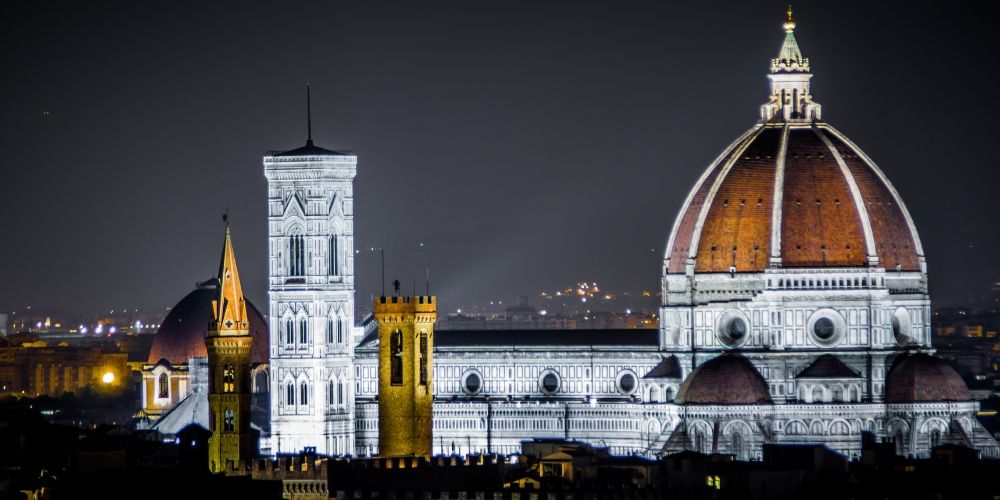
So who was Giotto? Giotto di Bondone was born around 1267 in Colle di Vespignano, a small village near Florence. According to tradition, he was discovered as a child drawing on a rock by Cimabue, who took him on as an apprentice.
Little is known about his private life, but it is believed that he had a family and led a fairly stable life, away from excesses, dedicating himself consistently to his artistic work. He lived in Florence for much of his life, where he left some of his most important marks: the famous Campanile next to the Duomo, which he began in 1334, and the frescoes in the Bardi and Peruzzi Chapels inside the Basilica of Santa Croce.Giotto also worked in several Italian cities throughout his career, including Assisi, Padua, Rome, and Naples.
In short, Giotto was a traveling artist, like many of his time, but he always maintained a strong connection to Florence, where he returned and worked until his death in 1337.
But why is Giotto considered so important in the history of art? Because his work clearly shows a revolutionary style compared to the rigid Italian Gothic tradition of his time: his figures are more human, their gestures more expressive, and the storytelling more vivid and grounded in reality.
Explore Florence with Florence PassListen to the podcast version of the article with Monna Lisa and Leonardo's voices
Florence: the early education

According to tradition, Giotto was born into a humble family near Florence, the son of a shepherd named Bondone. One of the most well-known legends tells that, as a young boy tending his father’s flock, he caught the eye of the painter Cimabue. Giotto was said to be drawing a sheep on a rock with such natural skill and precision that Cimabue was deeply impressed. Struck by the boy’s innate talent, he invited Giotto to join his workshop—thus beginning the remarkable career of one of the greatest artists in history.
Though the story isn’t historically documented, it remains a compelling tale that highlights the idea of genius emerging from humble origins and marks the symbolic beginning of Giotto’s path as a master of medieval art.
Main artistic works
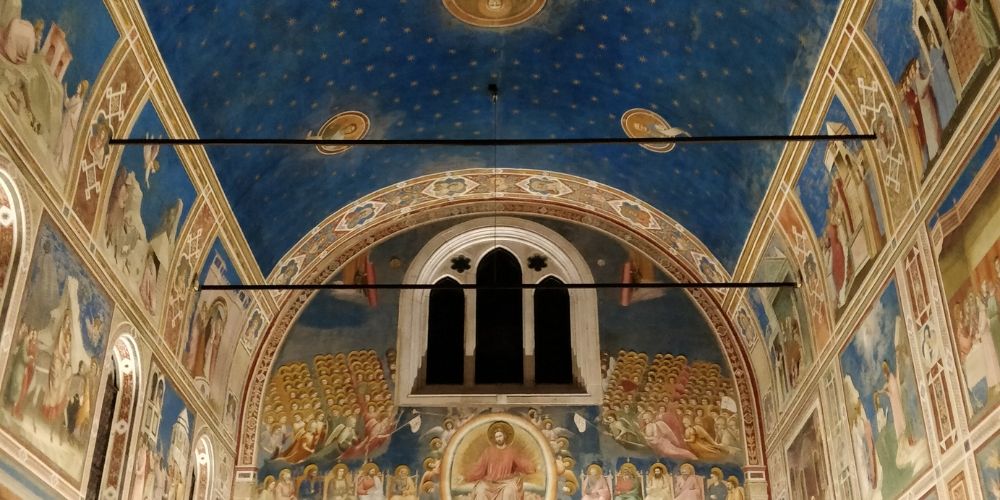
The cycle of frescoes in the Scrovegni Chapel in Padua, created between 1303 and 1305, is unanimously recognized as his masterpiece. The scenes of the life of Mary and Christ, culminating in the Last Judgment, show a new use of space, perspective, and the emotional expression of the characters, marking a turning point in medieval painting. As for the Bell Tower, although Giotto was better known as a painter, with it the artist demonstrates his ability to conceive art also in spatial and three-dimensional terms. The structure rises beside the Cathedral of Florence, elegant and solemn, clad in white, green, and pink marbles, reflecting light in ever-different ways. The building, although imposing, maintains a visual lightness thanks to the double and triple windows, a true manifesto of beauty and harmony.Finally, the cycle of frescoes in the Upper Basilica of Saint Francis in Assisi, traditionally attributed to him, represents another a fundamental moment for the birth of a new type of sacred painting, thanks to the introduction of architectural settings and figures that convey recognizable emotions.
Artistic innovations: perspective, emotion, and realism
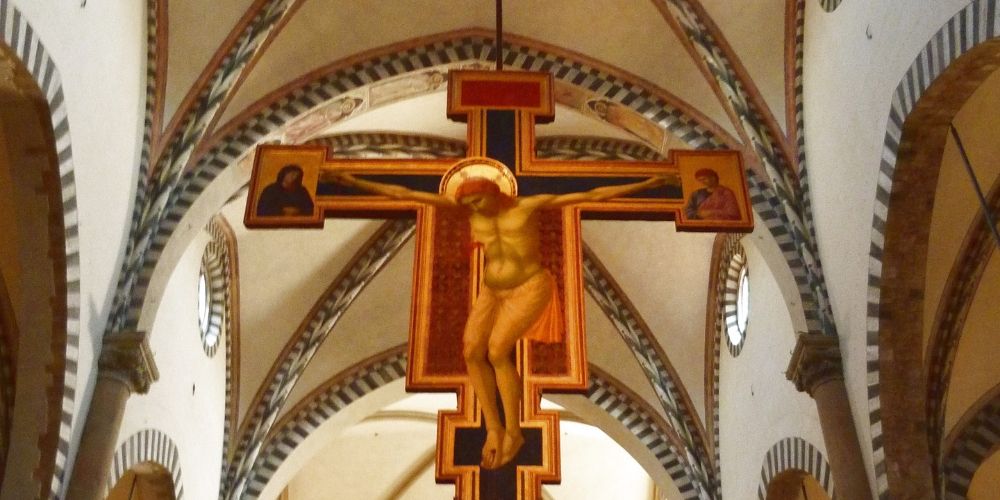
But what exactly are the artistic innovations introduced by Giotto? How did Giotto influence the Renaissance?
He was one of the first artists of the 14th century to give real expression to human emotions—pain, tenderness, fear, and compassion. In his frescoes, figures are no longer static or symbolic, but living people who react and feel. This focus on inner life had a deep influence on later artists. At the same time, Giotto laid the groundwork for a new way of representing space: he painted architectural settings to suggest depth and arranged scenes with a clear narrative logic. His compositions introduced a sense of spatial structure that had been entirely absent before.
Giotto was an innovator. He began placing the human figure at the center of the scene—an idea that would become central to the Renaissance. His characters are not just part of a religious story, but individuals who express emotion.
In short, Giotto was the bridge between the Middle Ages and the Renaissance. His stylistic breakthrough has opened the way for everything that followed: perspective, naturalism, interest in anatomy, and a more realistic approach to representing the world.
The role of Giotto in the formation of the Renaissance
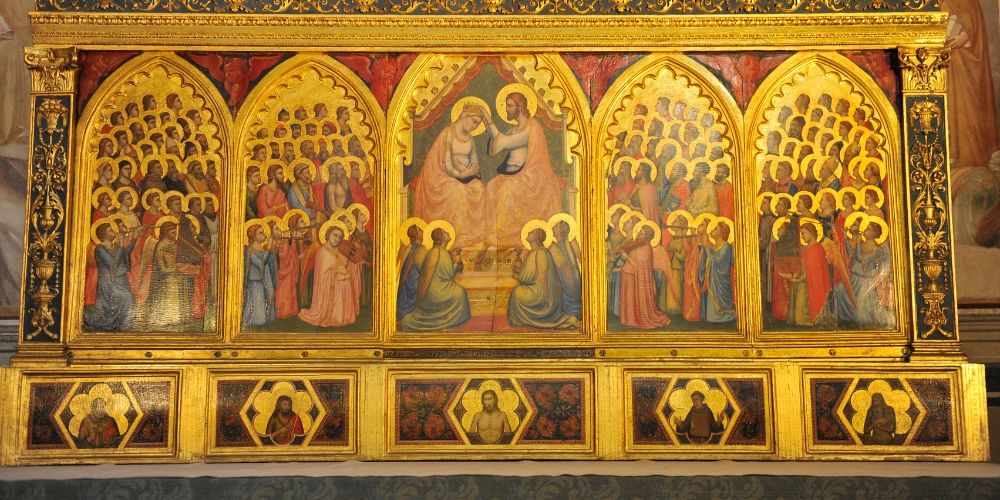
Giotto is therefore considered a central figure in the history of Western art for his ability to break away from Byzantine tradition and introduce a new way of storytelling through images.
Before Giotto, in fact, painting was dominated by rigid, flat, symbolic figures, which were not very expressive, placed in abstract and gilded spaces.
So what is Giotto's influence on the Renaissance? Our artist breaks this scheme, introducing volumetric bodies, three-dimensional space, and architectural settings. His figures have volume, movement, in short, they occupy real space. His new way of painting therefore represents the anteroom of Renaissance painting, which aims to represent the world in a more realistic and human way.
Where to see Giotto's art in Florence
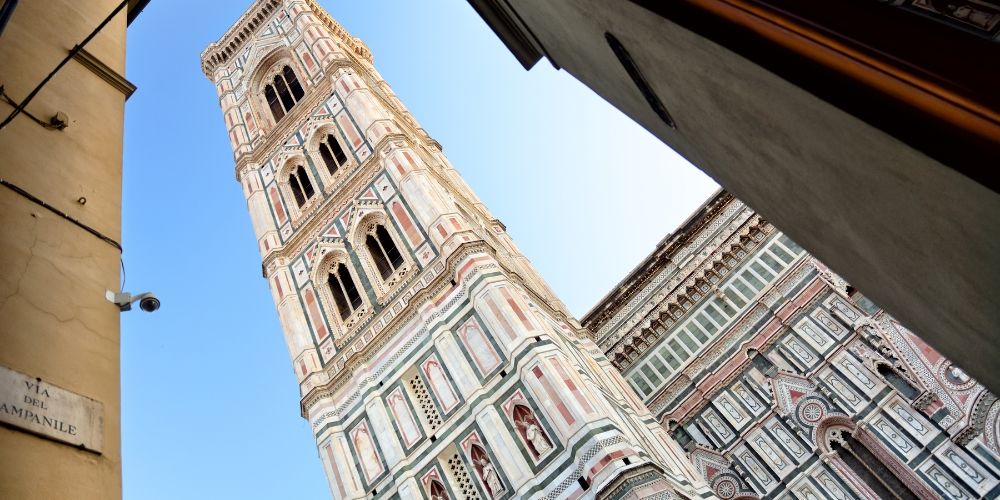
What are the works of art by Giotto in Florence? Where can I see Giotto's works in Florence?
Here they are:
Giotto’s Crucifix in Santa Maria Novella 1290–1295
Standing five meters tall and painted in tempera on wood, this crucifix hangs in the central nave of the church and is striking in both its beauty and emotional power. Giotto humanizes Christ, his body is real, suffering, heavy, moving away from the idealized and symbolic Byzantine image. It is a turning point in the way spirituality is represented, with a remarkable visual and emotional effect.
The Crucifix in Santa Croce 1320–1325
Even more mature and naturalistic, this later work shows how far ahead Giotto was in portraying the three-dimensionality and dramaticity of Christ’s body. Also painted in tempera on wood, this crucifix displays a clear evolution from the Santa Maria Novella version, particularly in its more intense emotional expression and the stronger use of chiaroscuro in shaping the figure.
The Ognissanti Madonna, Uffizi Gallery, Florence 1310
One of Giotto’s most famous panel paintings. Here, the Madonna is no longer a flat, symbolic figure but sits convincingly on a throne, placed within a believable spatial setting. The sense of volume and the gentle, lifelike expression still resonate with viewers today.
Giotto’s Bell Tower 1334
Designed by Giotto in 1334 and completed in 1359 by Francesco Talenti after the artist’s death, the bell tower of Florence Cathedral stands about 85 meters tall and is clad in white, green, and pink marble, matching the cathedral’s façade. With its square base and five-level structure, the tower is renowned for its balance between architecture and sculpture. At the base are hexagonal and diamond-shaped panels illustrating human labor, the arts, and the virtues, created by Andrea Pisano and partly by Donatello. The upper niches house statues of prophets and patriarchs. More than just a functional structure, Giotto’s bell tower is a masterpiece of elegance and symbolism,one of the most beautiful bell towers in the world.
Why is Giotto still important today?
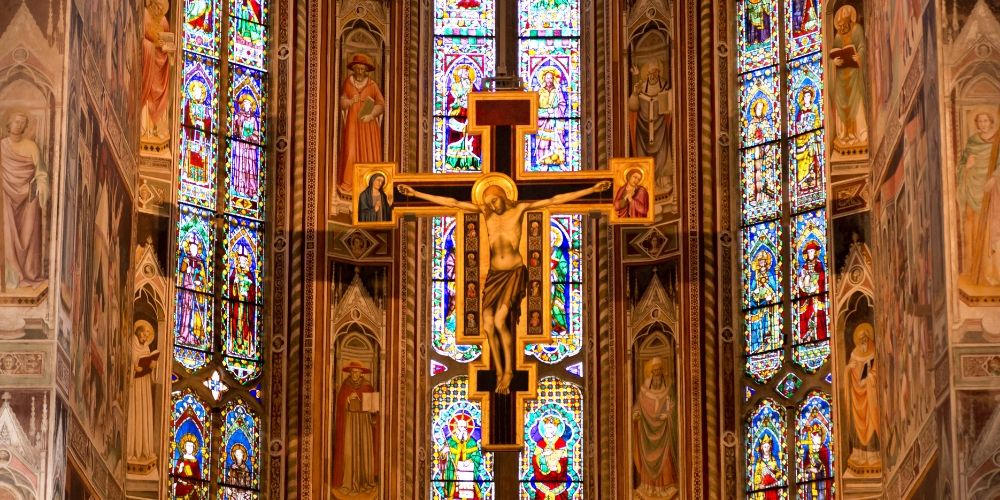
The legacy of Giotto in Florence and to later generations is vast and fundamental: he changed forever the way of making art in the West.
This 14th-century artist has permanently altered the expressive language, also laying the foundations for an intuitive perspective.
He learned to look at reality with new eyes and to tell it to us in a direct and effective way, demonstrating how innovation and tradition can coexist.
Starting from medieval models, Giotto surpasses them without denying them, offering a contemporary example of balance between ancient language and new sensibility. For this reason, his figure remains central not only in the history of art but also to understand the role of the artist and his continuous search for new ways to express himself.
About the author
Written on 12/06/2025

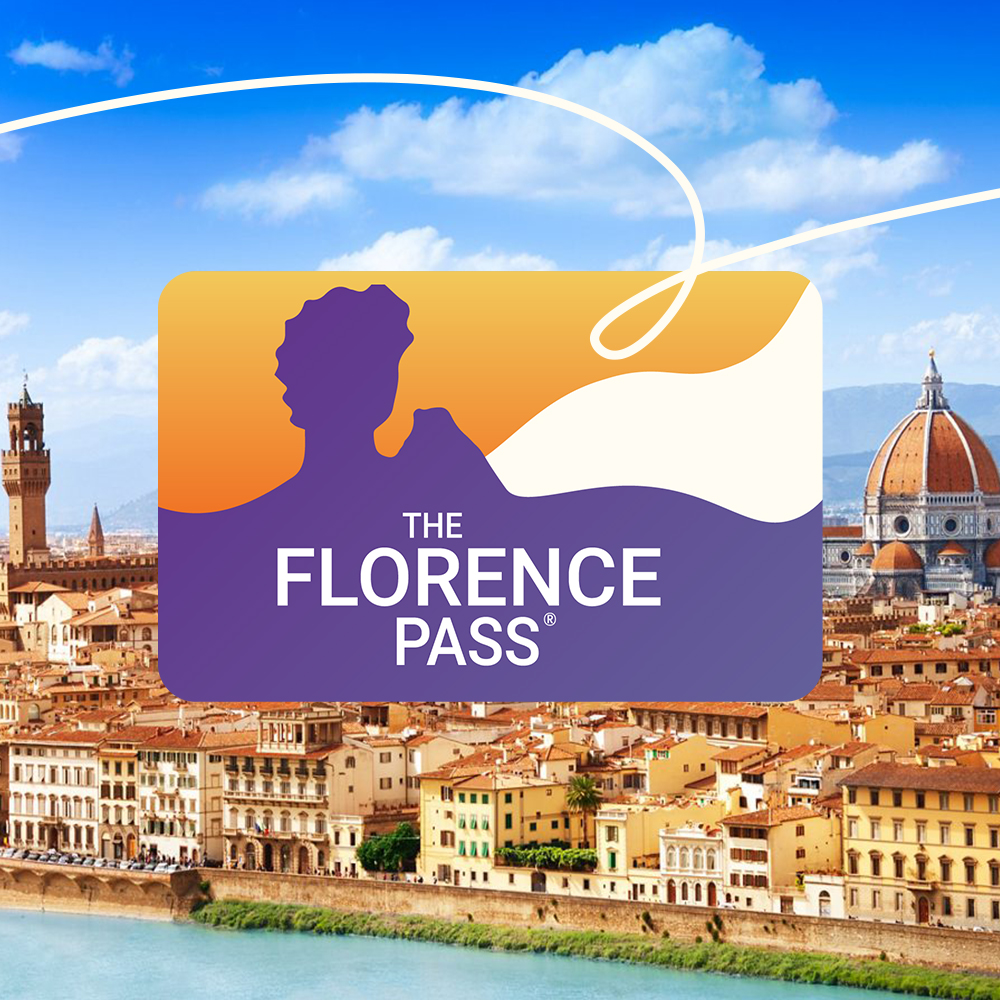
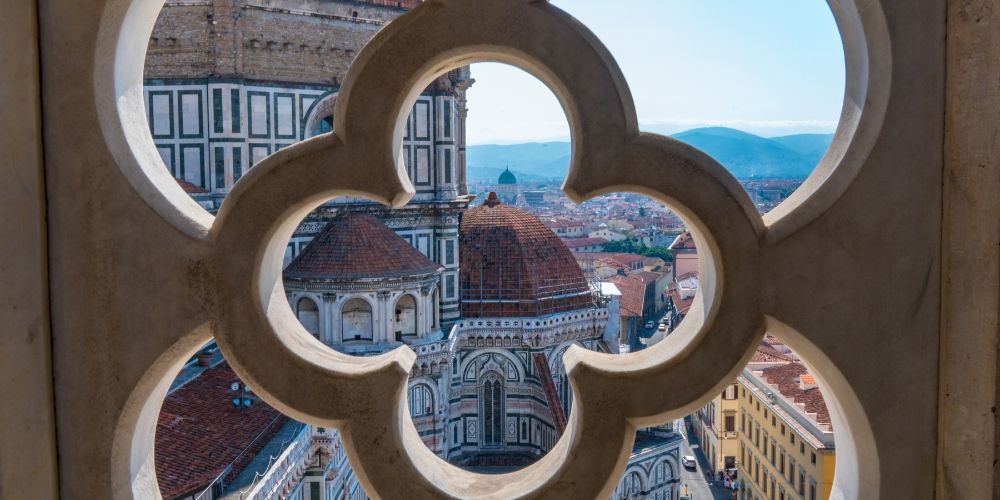

Giacinta Navarra
Giotto, genius of the 14th century, revolutionized art with emotions and realism. In Florence, you can admire his works in the heart of the Renaissan!